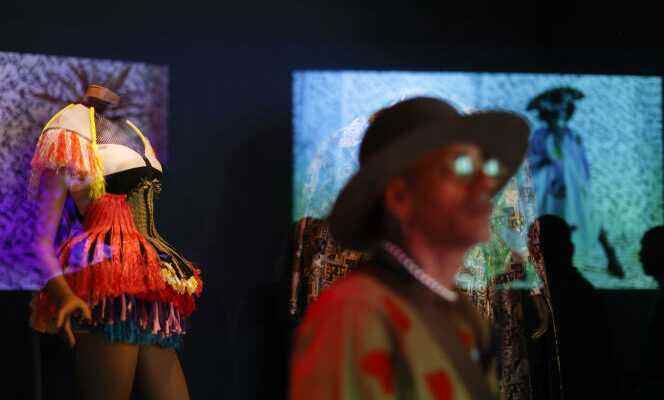The Victoria and Albert Museum (V&A), in London, celebrates African fashion, from Saturday July 2, in its first major exhibition devoted to the infinite creativity of designers from the continent. “We wanted to celebrate the amazing African fashion scene today”explained to AFP Elisabeth Murray, who participated in the design of the exhibition: “Obviously it’s impossible to sum up a fashion continent, so the aim of the exhibition is really to give an insight into the glamor and politics of the fashion scene. »
Established in 1852, at a time when the UK was expanding its empire, the V&A Museum is dedicated to art and design. But, notes curator Christine Checinska, “African creativity has been greatly excluded or misrepresented due to the historical divide between art and ethnography museums that results from our colonial roots and entrenched racist principles”. In recent years, anti-racist movements, including Black Lives Matter, have pushed the United Kingdom to reflect on the relationship to its colonial past, from the collections of its museums to statues and monuments.
Africa Fashion is the largest ever exhibition of African fashion in the UK. It opens with the era of independence, years of liberation and great political, social and cultural transformation, when dressing can be a political act. Following the example of the Ghanaian Prime Minister Kwame Nkrumah, who, in 1957, displayed himself in a kente loincloth, a colorful and thick traditional fabric. Just after announcing the independence of the country, he thus abandoned the European costume in a symbolic gesture. Even today, the choice to wear a particular color or pattern takes on specific meanings.
Minimalist aesthetic
Aso oke, ankara, bogolan… A wide range of fabrics are produced on the African continent with very diverse materials and techniques. As sculptor El Anatsui once said, echoing artist Sonya Clark: “Cloth is to Africans what monuments are to Westerners. » Fabrics are reinvented and brought up to date, such as adire, an indigo-dyed fabric, traditionally produced in southwestern Nigeria and now popularized by brands such as Maki Oh, Lagos Space Program and Orange Culture.
On two levels, the creations of emblematic designers of the mid-20th century rub shoulderse century, including the Nigerien Alphadi, the Malian Chris Seydou or the Nigerian Shade Thomas-Fahm, alongside contemporary designers such as the Nigerian Bubu Ogisi, whose brand Iamisigo showcases fabrics and techniques from the continent. The minimalist aesthetic of the brands Katush, based in Kenya, or Moshions, in Rwanda, contradicts the presuppositions of an African fashion that would overflow with colors and patterns.
In this very eclectic catalogue, “there is a link that connects all of this, it is the passion for culture”stylist Artsi Ifrach told AFP. “The idea is to provoke people’s memories, to make them feel something”, adds the creator. The gamble paid off with the piece he made especially for the exhibition, designed from a trench coat typical of the British wardrobe and transformed into an oversized golden burqa.
To not miss any African news, subscribe to the newsletter of the World Africa from this link. Every Saturday at 6 a.m., find a week of news and debates covered by the editorial staff of the World Africa.
